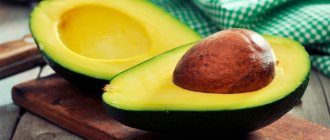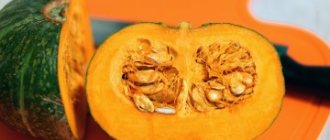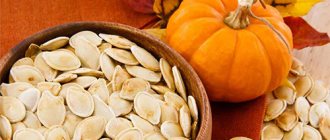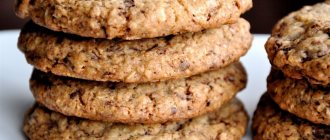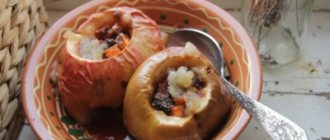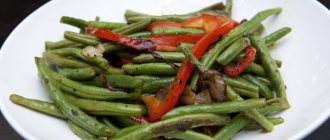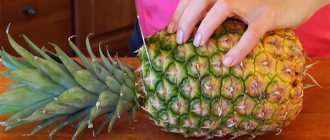After the birth of a newborn, a woman will certainly have to reconsider her diet and daily routine, because the health of the baby depends on her nutrition. They will be forced to remove many products from the menu, especially in the first two months after childbirth. This recommendation is associated with the risks of gastrointestinal disorders and allergic reactions in the infant. Can a nursing mother eat sausages while breastfeeding? The answer to this question cannot be unambiguous. High-quality sausages made exclusively from meat are incapable of causing harm, which cannot be said about products sold in supermarkets and spontaneous markets.
Rules for choosing sausages
As soon as you visit the meat section at the market or supermarket, pay attention to the more expensive delicacies category. Such products often contain a higher percentage of natural meat
The expensive delicacy contains the least amount of harmful components. It is strictly forbidden to eat cheap sausages. You are putting not only your baby at risk, but also yourself. Such products can easily provoke poisoning or the development of an allergic reaction in a growing organism. Even choosing an expensive semi-finished product does not solve all problems. Study the composition carefully. If the percentage of meat is minimal, you should think about the fact that the rest of the product consists of preservatives and other harmful components. It is better to discard such products immediately. As mentioned earlier, it is better to give preference to milk sausages. Especially if you continue to breastfeed your baby. It is also recommended to pay attention to “Children’s” sausages or semi-finished products. Such products are made from lean meats. It is strictly prohibited to purchase ham or raw smoked products. Also, the product should not contain various spices and herbs. During lactation, products more similar in composition and appearance to doctor's sausage are allowed.
Boiled sausage and sausages in the diet of a nursing mother
Sausages in the modern world are convenient, practical, and tasty. A sandwich prepared for breakfast will wake up the body and add flavor to the bread. Sausages cooked for lunch will add the illusion of meat on the plate and require a minimum of time spent. Beautifully decorated sausages add variety to dinner. The speed of receiving a ready-made meal is a very attractive aspect in the life of a nursing mother, when every free minute counts. This is where the question arises about the possible use of such products. The answer to this must be sought in their composition, which will give an idea of the beneficial and harmful properties of the products.
Shops offer a wide variety of sausages
Composition of sausages
The normal composition of sausage, manufactured in accordance with GOST, should include:
- meat;
- eggs;
- milk;
- lard;
- salt;
- spices.
Some types of sausages allow the content of by-products (skin, cartilage, tendons). There are also products with the addition of minced chicken, which, in addition to the meat itself, can contain bones and feathers.
However, modern manufacturers very often add to it to extend the shelf life of sausage and reduce the cost of the production process:
- concentrates;
- stabilizers;
- flavorings;
- dyes;
- preservatives;
- flour or starch as a binder (in the Soviet Union, these additives were allowed only in second-grade sausage).
Before purchasing sausage, be sure to carefully study its composition.
Meat also does not always end up in sausages; manufacturers have long learned to use two types of substitutes:
- vegetable origin (soybeans, vegetable fat, margarines, flour, starch, semolina, rice and other cereals);
- animal origin (protein powder, protein concentrate, beef fat).
The benefits of boiled sausage
Boiled sausage is a source of easily digestible protein; it has a positive effect on the hematopoietic system, saturates and nourishes the body. To do this, the product must be meat with the addition of natural spices, and modern production for the most part tries to replace meat with offal. It is difficult to find benefits for the body when consuming such things.
Harm from boiled sausage
Concentrates, dyes, preservatives - all these are substances that can harm the mother’s digestive system, and, consequently, the baby. Moreover, a small portion is enough for his body to react accordingly:
- allergic reaction;
- vomiting;
- diarrhea;
- colic;
- metabolic disorders;
- bloating.
Sausages may contain starch. It is not harmful in itself, but it does cause weight gain, which should be taken into account by overweight women.
Principles of cooking meat for nursing
In the first weeks of a baby's life, low-fat meat broth, as well as soups for nursing with the addition of vegetables, will be a suitable dish. These are zucchini and potatoes, cauliflower and broccoli, and, if you are not allergic, carrots. Read here what other vegetables you can eat while breastfeeding. Eat the broth warm, too hot a dish will harm lactation, and when cold it loses some of its beneficial properties.
Select meat carefully, monitor expiration date and quality. Soak cuts, especially beef, for one to two hours before eating. When preparing soups, drain the broth after 3-5 minutes and add fresh water. The finished meat dish can be stored for a maximum of 10-12 hours in the refrigerator. But it is better to eat immediately after cooking.
When breastfeeding, meat can be eaten only after heat treatment. This can be boiled, baked or steamed. A nursing mother should never eat raw meat or rare steaks; she should limit the consumption of fried and grilled meat.
Fried foods increase the irritating effect on the mother's intestines and are difficult for the infant to digest. Therefore, such food can be consumed occasionally no earlier than 2-3 months after birth.
About the benefits of meat
A young mother gives her baby with milk a large amount of useful substances necessary for the development of the baby’s body. In order for the milk to contain everything necessary, and for the mother to remain healthy and productive, she must eat well.
Meat provides the body with a supply of animal proteins, which both the baby needs to grow and the mother to recover after childbirth. It is also necessary for stable long-term lactation. Animal proteins are required by the body to form body tissues, create blood cells, and function the immune system. Proteins are also necessary for a nursing woman’s nervous system to cope with stress, sleepless nights, and severe fatigue.
READ ALSO: Can a nursing mother eat black caviar?
You need to eat it 4-5 times a week, but can you eat it processed, in the form of sausages?
READ ALSO: What foods can a nursing mother eat in the first month after giving birth?
Doctor's sausage for breastfeeding: what's special about it
Probably, not everyone knows that the doctor’s sausage recipe was specially developed as a therapeutic food for people with poor health. The composition of real doctor's sausage, manufactured in accordance with the existing standard, must contain at least 25% beef and 70%. The remaining 5% of the product comes from eggs (or melange), milk powder, sugar, salt and spices. And, of course, this dietary product should not contain any soy, dyes or flavor enhancers.
Is it possible to use doctor's sausage while breastfeeding? It is possible if you are not replacing a full breakfast or lunch with sandwiches, and besides, we are talking about a really high-quality (and, therefore, not too cheap) product.
A small amount of this sausage as a hearty snack or addition to breakfast is an excellent option for an ever-busy nursing mother who simply cannot afford the stress of hunger. This can negatively affect the quantity and quality of breast milk.
The advantages of doctor's sausage are quite obvious:
- it is a source of protein, which is especially necessary during lactation, since its constituent amino acids are necessary for the growth and development of the child;
- the minimal (compared to other sausages) fat content allows it to be easily digested without creating a heavy burden on the digestive organs;
- does not require heat treatment and allows you to quickly satisfy your hunger.
If your baby is over three months old, you can sometimes treat yourself to a sandwich with doctor's sausage. Nutritionists almost unanimously believe that a small amount of “unhealthy” food will cause less harm than the stress caused by the ban on a significant part of the usual diet.
What happens if you eat this?
Cheap sausages and sausages containing many different additives can lead to trouble:
- increased gas formation in the baby, which will lead to tummy pain, colic,
- allergic reactions, rashes,
- disruption of metabolic processes in the baby’s body, which will lead to retardation in height and weight,
- diarrhea, which weakens the child’s body and threatens dehydration,
- nausea, heartburn, gastrointestinal disorders in the mother,
- swelling in the mother caused by excess salt in sausages.
Which sausage should you choose when purchasing?
On the shelves you can see many different types and varieties of sausages, small sausages, and frankfurters.
When purchasing any type of sausage, it is recommended to adhere to the following rules:
First of all, you should study the composition of the product. It should not contain ingredients with code E. If they are present, you do not need to purchase the product
You should not purchase sausages containing vegetable fat or protein, soy, or thickeners. It is important that the sausage product is manufactured in accordance with GOST. The composition should include meat, eggs, bacon, milk. The presence of starch in the composition is not harmful, it can simply lead to extra calories and weight gain. It is important to pay attention to the date of manufacture of the product and the expiration date
It is advisable to buy sausage made within 24 hours. Stores may also sell products that have expired. You also need to evaluate the color of the product - normally it is slightly pink. Red color indicates the presence of a dye that is harmful to health. It is better to buy those types of sausages that are already familiar, rather than purchasing a new product every time. You should not buy sausages, small sausages or sausages for future use, in large quantities. You can take it for 1-2 days and then purchase a fresh product. It is better to buy sausages from well-known brands made from beef and pork. In addition to meat, manufacturers often use bones in chicken products. There should be no bubbles, cartilage or fibers on a slightly damp cut of sausage. The elasticity of a piece of sausage indicates a large amount of gelatin in its composition, and this is harmful during breastfeeding. It is advisable to choose sausages and sausages that are not smoked and those in which the casing is natural. It is better to purchase products from local producers - this way you are more likely to buy a fresh product. The shelf life for boiled sausage when stored correctly is 3 days from the date of production. A longer shelf life indicated on the label indicates the presence of a preservative in the product.
After purchase, sausages should be kept in the refrigerator by placing them in a food container or wrapped in cling film. Cannot be stored in a plastic bag.
What to do?
A nursing mother does not need to go on a strict diet. You need to choose food carefully in the first month of your baby’s life. Then you can add new dishes to your menu, including sausages. To diversify your menu, a nursing mother can also eat sausages. The main thing is to follow some simple rules:
READ ALSO: Can a nursing mother have dumplings?
- When choosing sausages, you should avoid smoked ones; you should not take dark pink or brown ones. It is better to buy those that have a grayish-pink color, this is the natural color of the product. First of all, you should pay attention to the expiration date and storage conditions: even unexpired products can be spoiled at the wrong temperature.
- There are varieties of sausages that have increased requirements; they have undergone additional testing and are intended for baby food. They indicate at what age a child can use the product. It must be remembered that the name does not say anything about the purpose of the product. All sorts of “Strong”, “Crumbs”, “Toptyzhki” do not necessarily have the necessary markings. Such names are given to products in order to improve sales, so you need to pay attention not to the name, but to the components included in the sausage product.
- The highest and first grade sausages have the best composition. Ham contains the most natural meat, followed by semi-smoked sausages, boiled sausage, and sausages. Sausages take the last place on this list.
- You need to choose familiar brands of product; you should not experiment during lactation. You need to gradually include this or that sausage product in your menu, monitoring the baby’s reaction. Eating sausages more than 2 times a week is not recommended.
- Any sausage product that turns out to be spicy or odorous should be immediately put aside. It can change the taste of breast milk and create many problems for the nursing mother.
- During breastfeeding, sausages and sausages can only be consumed boiled, and they must be cooked after removing the plastic casing.
READ ALSO: Can nursing mothers eat pomegranate?
Homemade recipe for making milk sausage for nursing mothers
There are simple recipes for homemade milk sausage, similar in composition to store-bought sausage. Its preparation is 100% reliable, fresh and quality!
Ingredients
- Low-fat minced pork – 500 g;
- Minced veal – 300 g;
- Milk – 0.25 tbsp;
- Egg – 1 pc.;
- Salt, pepper – moderately to taste;
- Beetroot juice – 0.5 tsp.
Preparation
- Mix all ingredients and pass through a meat grinder or blender twice.
- Place in a baking sleeve or in a special casing, compacting it well, giving it a cylindrical shape and securing the ends.
- Keep the preparation in the refrigerator for 2 hours.
- Cook in a slow cooker on steam mode for about 50 minutes.
- Remove, cool, serve.
This sausage may be inferior in appearance, but it has clear advantages in taste and the absence of preservatives!
Are you still wondering whether milk sausage can be consumed while breastfeeding? Prepare it yourself and eat it to your health! The good thing about cooking at home is that you can experiment and make a suitable selection of ingredients. But no matter how tasty the dish prepared by yourself is, it is still necessary to remember about calories and restrictions during lactation.
What types of sausage can a nursing mother eat, and which cannot?
If a nursing mother really wants to eat sausage or frankfurters (especially since many women are addicted to such food before pregnancy), then it is permissible to consume only certain types of these products. In particular, this is a high-quality boiled sausage, made exclusively in accordance with GOST, containing only meat, milk, eggs and salt (for example, “Doctor’s sausage” and milk sausages).
Spices and lard are undesirable for women during lactation. Of course, the product should not contain synthetic preservatives or additives. It is desirable that the product has a natural shell.
Boiled sausage made according to GOST is an acceptable option for a nursing woman
If we talk about meat in boiled sausage, then chicken or beef is preferable. They are easier to digest and do not contain much fat. This product will saturate a woman’s body with protein without compromising her health.
As for other types of sausages, it is extremely undesirable to consume them during lactation:
- Liverwurst. Of course, this is a budget option, it is produced in a natural shell, the product has a short shelf life (which means it contains few preservatives). However, such sausage consists of by-products, which themselves are very fatty. Gastrointestinal tract disorders will be ensured for mother and child. In addition, when fattening animals, hormones and antibiotics are often used, which are deposited primarily in the organs used for liver sausage.
- Smoked sausages. Of course, these products have a wonderful taste, but they contain dangerous components. When smoking, a special liquid containing phenols, acids, and carbonyl compounds is used. Often, unscrupulous entrepreneurs use stale meat for production, the taste of which is clogged by the abundance of spices. Of course, such a product is unacceptable when breastfeeding.
- Blood sausage. This product is rich in iron (made from animal blood with the addition of liver, tongue, sometimes cereals and spices), but has a very short shelf life. When purchasing a store-bought product, there is a high risk of poisoning. It is permissible to consume such food only at home and after mandatory heat treatment.
Menu for lactation
Pediatricians create menus by month and even week for nursing mothers. Knowing the list of permitted products, you can independently choose the diet that suits you best. Here is a sample menu by month that can be adjusted.
For the first week, you need to limit your diet as much as possible and consume only vegetable broth and apple or zucchini puree. On the tenth day, the following can be added to a nursing mother’s diet:
- Galette cookies (“Jubilee” and “Maria”);
- Dried fruits;
- Stewed vegetables (zucchini, carrots, pumpkin, carrots);
- Pasta;
- Fermented milk products: hard cheeses, fermented baked milk, cottage cheese and kefir;
- Boiled fish;
- Bread with bran.
Thus, for the first month, a nursing mother should eat as follows:
- Dietary boiled poultry, turkey, rabbit or beef;
- Vegetarian soup;
- A small amount of butter meat;
- Applesauce or baked apples and bananas;
- Olive and sunflower oil;
- Porridge with water (except semolina);
- Still drinking water, compote, decoctions and green tea.
The second or third month, in addition to the usual diet, includes raw fruits and vegetables, low-fat borscht. After the third month, gradually introduce potatoes, meat broths, eggs and other permitted foods. After six months, you can diversify your diet as much as possible and start eating semolina porridge, soups, coffee and strong tea.
You can return to your usual menu 1-1.5 years after the baby is born. However, remember that proper nutrition is necessary not only for the full development and growth of the child, but also for you. This is the key to a beautiful and slender figure, good health and well-being.
How to choose what to pay attention to and is it allowed to eat “Doctor’s”?
Take sausage that is no more than a day old from the date of release. Pay attention to the color - it should be slightly pinkish. Do not choose a product that is saturated red or pink in color - this indicates a high content of dyes. Choose sausages in natural casings. There should not be any irregularities visible on the cut of the sausage. It is better to choose locally made products. If you bought pre-sliced sausage, be sure to heat-treat it. Buy foods that contain more than 10% protein. If the pieces curl easily without breaking, this indicates a large amount of gelatin, which will have an extremely negative impact on the baby during breastfeeding.
Most recommended varieties:
- Higher:
- doctoral;
- dairy;
- amateur and amateur pork;
- veal;
- Krasnodar and capital.
- First grade:
- Moscow;
- metropolitan;
- separate and separate lamb.
- Second grade: tea.
How to choose the “right” sausage?
There are rules to distinguish a good product from a poor one.
- Be sure to read and inspect the label. It should be well designed and easy to read. Blurred, crooked inscriptions are a sign of a fake. You already know which composition to choose.
- Check the production date.
- It is better if the sausage is produced at a local enterprise, there is a better chance that it is fresh.
- If possible, you need to look at the cut (perhaps you will only do this at home, then you will have to remember whether you can still buy one or not). The cut should be smooth, slightly velvety and moist, uniform in texture and color. If individual fibers, tendons and cartilage stick out, layering is visible - this is a low-quality product, it contains a lot of hydrolyzate. If the cut is too smooth and shiny, and covered with cut small bubbles (like a cut of cheese), there is too much gelatin in this sausage. Such slices are also very elastic and easily curl into beautiful “petals” and “pounds.” The characteristic slightly sweet taste is a sign of soy.
- If possible, give preference to chopped ham rather than milk sausages - ham sausages obviously contain more real meat.
- If the manufacturer indicated that the sausage contains “pork” and “mechanically separated chicken,” you can be sure that there is no more than 5% pork, everything else is chicken with bones and possibly even ground feathers. DO NOT buy such products.
- Never buy sausage made according to specifications, even if all other indicators are perfect. TU is always less demanding on product quality than GOST.
- “Special”, “prime”, “best” sausages are just imitations. “Molochnaya” is a brand, “Molochnaya Special” is a fake.
- To find out whether there is starch in the sausage or not, drop a drop of iodine on a slice. Sausage with starch will turn blue. Starch is not terrible in itself (it’s just very high in calories, and there’s not enough meat in such sausage). Think of this sausage as meat with a side dish.
- Check the calorie content of the sausage and its protein content. If the protein content is less than 10%, the product is not worth buying. You will get this amount of protein (and also incomplete) from 100 grams of bread, but without salt and chemical additives.
- Beautiful packaging is not yet an indicator of quality; do not forget to watch programs that talk about the examination of product quality.
Is monosodium glutamate, which is added to boiled sausage, harmful?
Research by scientists has shown that monosodium glutamate does not change the composition of milk, and is completely harmless to the mother in amounts of less than 10 grams per day (that’s 2 heaped tablespoons of powder). To get this amount with sausage, you need to eat 20 kilograms... But it’s still better not to risk it. The less flavor enhancer in the sausage, and the more real meat, the better for mother and child. But it’s better to avoid sausages labeled MOM altogether.
How much and how often can you eat sausages during lactation?
An adult portion of semi-finished meat products is usually equivalent to two standard sausages or four small ones. This is the volume of product that is considered acceptable for a nursing mother. Provided that you have chosen a high-quality and expensive product.
An exception may be homemade sausages, which you yourself made from healthy ingredients and cooked according to all the rules, without the use of chemical additives. This dish is actually equivalent to ordinary lean boiled meat, so you hardly need to be careful with it.
If your baby normally tolerates any food that you try, then in addition to dairy varieties of sausages, you can gradually try others, if they are not too fatty and have passed the necessary certification. But you will need to wait a bit with smoked sausages and spicy sausages - at least until complementary feeding products appear on the baby’s menu.
So, is it possible to have sausages while breastfeeding? To sum up, we can definitely say yes. By following a number of certain rules, not starting to try the product too early after birth and choosing only high-quality semi-finished products, you can start trying your favorite milk sausages as early as six to seven weeks after birth, when your baby is a little older. With other types of deli meats, you will need to wait a few more months.
Is it allowed to give to a child?
Sausages in a child’s diet can be an emergency food, that is, the mother did not have time to prepare dinner or lunch, and sausage products will only help out. But provided that they are not eaten often.
From what age?
Despite products prepared specifically for children, it is worth refraining from consuming them until two or three years of age. The child will definitely try them in kindergarten. Meat products appear in a baby’s diet after six months and in a simple form (broths, ground meat), and sausages are prohibited by pediatricians up to a year.
Serve with porridge or puree. Some mothers try to creatively design food for their child to make it more interesting for him to eat. For example, sausages make funny octopuses.
Benefits for the baby
As for the mother, sausages in the baby’s diet replenish the protein supply; the meat composition has a beneficial effect on the process of hematopoiesis.
Attention! Sausages with a lot of meat contain: magnesium, potassium, calcium. They are necessary for the baby's growth. The biggest plus is saturation.
Which varieties to choose
To make it easier to navigate the quality of the product, there is a division into varieties. The best of them is the highest. Next come the first and second, respectively. They differ from each other in composition. Also, the more meat, the better the product. Low grades contain various additives and substitutes. It follows from this that the higher the grade, the tastier and healthier the sausage will be.
Boiled
Is it possible to cook boiled sausage while breastfeeding? During lactation, it is best to eat this type of product. It is best to choose a product that contains as few preservatives and other chemicals as possible. To do this, you need to carefully study the label.
There are many different types and names. Is it possible to use doctor's sausage while breastfeeding? According to old standards, it should have included only natural ingredients: meat, eggs and milk. That is why it was allowed for people with stomach diseases. Doctor's note is also used during lactation. This is one of the best sausages, although it has still lost its former quality.
In addition to boiled sausage, during breastfeeding, you can also eat sausages and small sausages. Here it’s better to choose amateur or dairy ones.
Smoked
Can a nursing mother have smoked sausage and frankfurters? The fact is that smoking meat products naturally is expensive. Therefore, manufacturers, in order to reduce the cost and speed up the process, use a special solution called “liquid smoke”. With the help of various chemical components, sausage acquires a marketable appearance. Therefore, it is better to avoid eating smoked foods.
Harmful properties of sausage
The use of low-quality products while breastfeeding provokes poisoning of the mother and child. Even one sausage can cause a baby to develop diarrhea, bloating, colic, and worsen metabolism.
Mothers should not eat sausage often, as it contains harmful concentrates. Sausages do not have vitamins and nutrients, and many products contain only 10% meat. When making cheap sausages, cartilage and skin are used. Therefore, you should only consume high-quality products or homemade sausage.
Sausage: should you eat it or not?
Recently, the opinions of children's pediatricians regarding the mother's menu during breastfeeding have differed greatly. As a rule, Soviet-era specialists more often than usual advocate that at the time of breastfeeding, a new mother should be on a strict diet, completely eliminating most of the usual foods from the diet. Experts in the modern world are of the opinion that after the birth of a baby, you can eat everything, but in moderation, observing the baby’s reaction.
But what to do and whose position to choose, because this is very important for a nursing mother? What is the right thing to do if you really want to, but are very scared? The answer is simple, you always need to know what the food we eat is made of. This is an important point during breastfeeding.
It would seem that sausage is a well-known product that many people enjoy eating. But, unfortunately, I don’t know everything about what exactly this or that variety consists of. To understand whether sausages can harm your baby, you need to know what they consist of. After all, a mother should consume all the best; the well-being of her child depends on the products she eats.
How to choose and what to pay attention to?
General recommendations regarding selection: carefully study the label before purchasing.
Recommendation: When breastfeeding, you need to eat sausages made in accordance with GOST.
They contain only:
- meat;
- milk;
- eggs;
- salt;
- spices and lard.
There should be no soy, vegetable protein, or food additives with index E in sausage for a nursing mother. Such ingredients, in addition to the main harm, also negatively affect lactation.
More detailed recommendations for choosing sausages:
- Choose a product that is as fresh as possible, preferably produced within 24 hours.
- The color of the sausage should not be overly bright. This indicates too much sodium nitrite. The desired color is grayish or slightly pink.
- Give preference to a product in a natural shell.
- Choose only the highest and first grade sausages. They have more meat.
- Buy products only from trusted and well-known manufacturers.
- Sausage products must contain more than 10% protein.
- The sausage cut should be uniform in color and slightly moist.
- If the sausage slices easily curl into tubes and are too elastic, then the gelatin content in the product is excessive. This will negatively affect lactation.
- In the product composition, those ingredients that are greater in percentage terms are listed first.
- If you purchased the sausage not as a whole stick, but in slices or pieces, then be sure to boil or bake in the oven before eating.
- Choose beef and pork products and avoid chicken sausages, which may contain ground bones and even feathers.
- Cheap sausages are a sure sign of low-quality raw materials.
Reference. Recommended varieties are boiled sausages “Doctorskaya” and “Molochnaya”, made in accordance with GOST. Children's sausages and sausages are also more preferable for breastfeeding due to their lower content of fat, nitrates, spices and salt.
In addition, children's varieties are more strictly tested for antibiotics, pesticides and toxic substances.
Is it allowed to eat sausages during breastfeeding?
Many pediatricians do not recommend getting carried away with eating sausages during lactation. The main reason for the ban is that the following products are used in the manufacture of these products:
- dyes;
- flavorings;
- preservatives.
And this can negatively affect the health of mother and child. If mom really wants to enjoy a piece of sausage, then she needs to choose proven products with the least amount of harmful substances.
What types?
During lactation, it is not recommended to eat smoked foods, including sausage, frankfurters and ham. Their danger lies in the fact that during the smoking process a certain amount of carcinogens is inevitably formed, that is, substances that, if consumed frequently, increase the risk of cancer.
Even natural smoking produces these substances that are hazardous to health.
And if we take into account that some unscrupulous producers of smoked products use so-called “liquid smoke” in order to shorten production times and reduce the cost of products, then a smoked product turns into a dangerous product even for a very healthy person, not to mention a nursing mother
When to include it on the menu?
Important! In the first month after the birth of a child, it is better not to consume store-bought sausage at all. At this time, the baby’s body is just adapting to new conditions, and excess stress can provoke negative consequences in his health and well-being.
At this time, the baby’s body is just adapting to new conditions, and excess stress can provoke negative consequences in his health and well-being.
If you really want, you can make homemade sausage from natural products. In this case, you will be absolutely sure that you will not harm your baby. If you fill a natural intestine with your own ground turkey or chicken breast and boil it in salted water, then the composition of such sausage will be no different from a piece of dietary boiled meat. No pediatrician has anything against it.
Apart from the minimum amount of pepper, such homemade sausage should not contain any other spices! And only three months after the start of lactation, you can slowly begin to introduce factory-made sausages and frankfurters into your diet.
How can it be useful for a mother?
High-quality boiled sausage or frankfurters must contain pork and beef. These types of meat contain a large amount of animal protein, which is so necessary for the normal development of the baby and stable lactation in the nursing mother.
In addition, despite heat treatment at high temperatures, good cooked sausages retain some of the following:
- vitamins - PP, A, E, B vitamins;
- useful minerals - potassium, calcium, magnesium, sodium, iron, iodine, sulfur and phosphorus.
For example, in boiled sausage “Doctorskaya” GOST regulates a strictly defined amount of vitamins and minerals.
Recipes for nursing mothers
The menu of a nursing mother may include not only cereals and purees, but also a delicious variety of nutritious dishes. We present several healthy and easy recipes that will complement your diet while breastfeeding.
Borsch
Borscht during lactation should be mild and not fried. To prepare, steam the vegetables or add them fresh. For the broth, use veal or beef without streaks.
Do not use tomato paste or tomato juice for cooking. Use fresh, peeled tomatoes. But adding zucchini to the soup will soften the effect of the “heavy” beets. Instead of white cabbage, use cauliflower. If you are using traditional cabbage, steam the product.
Before cooking, soak a piece of meat in cold water for two hours. This will eliminate harmful substances. And then cook in fresh water for 1.5-2 hours. To prepare vegetables, take beets and cabbage, potatoes and carrots. You can also use zucchini, as mentioned earlier.
Cut the beets into strips, potatoes and zucchini into cubes. Chop the cabbage and grate the carrots. When the meat is cooked, add the vegetables and cook the soup over low heat. Five minutes before readiness, add salt. You can add herbs and sour cream to the finished dish.
Cottage cheese casserole
A healthy and simple dish that is included in the diet of every nursing mother. Apples, raisins or dried apricots will help diversify the casserole. To prepare, take:
- Cottage cheese – 500 grams;
- Chicken egg – 1 pc.;
- Flour or semolina - 3 tbsp. spoons;
- Sour cream – 2-3 tbsp. spoons;
- Sugar – 2-3 tbsp. spoons.
The casserole is prepared in the oven, microwave or slow cooker, depending on capabilities and preferences. Consider a classic recipe for cottage cheese casserole in the oven. Mix semolina or flour with cottage cheese, and beat the egg with sugar. The egg and sugar are poured into a plate with cottage cheese and flour. Stir the mixture until smooth. You can add fruits, dried fruits or berries.
Grease a baking dish with vegetable oil, lay out the mixture and soak with sour cream. Cook the casserole for 40 minutes at 180 degrees. By the way, cottage cheese can also be prepared at home! This will not take much time and effort, but you will be confident in the composition and shelf life of the product. Read how to make cottage cheese at home here.
Rice casserole
A lot of dishes are prepared from rice. These are salads and cereals, pilaf and risotto, soups and casseroles. To prepare the rice casserole, take:
- Rice – 350 grams;
- Chicken fillet – 400 grams;
- Grated cheese – 150 grams;
- Sour cream – 150 grams;
- Chicken eggs – 2 pcs.;
- Tomatoes – 1-2 pcs.;
- Vegetable oil – 4 tbsp. spoons;
- Salt and herbs to taste.
Rinse the rice thoroughly, cut the fillet into pieces. Salt and mix the ingredients, add a glass of water and simmer under a closed lid until the rice is ready. When the rice has cooled, add sour cream and beaten eggs. Stir the mixture, add peeled and chopped tomatoes. Sprinkle grated cheese and herbs on top. Bake in the oven for 20 minutes at 200 degrees.
Baked apples
An optimal and safe dish during lactation. To prepare, take two or three green apples, peel them, remove the top and core with seeds. This way you will get an apple “cup”. Pour one teaspoon of sugar inside this “cup” and cover with the top. Cook the apples in the microwave for five to six minutes.
You will find even more ways to prepare soups, main courses, desserts and baked goods in the article “Menu for a nursing mother: delicious and healthy recipes.”
Is it possible to have sausages when breastfeeding a newborn?
For most breastfeeding women, a strict diet after childbirth is not easy - after all, so many favorite dishes are banned. One thing is good - the veto on products does not last indefinitely, so already a couple of weeks after the baby is born, you can begin to add variety to your diet.
Sausages are perhaps the favorite delicacy of many people, and at a time when the child is very small, they are also very convenient: throw them in a pan, boil them for a couple of minutes, and you can sit down to dinner. But many are well aware of the dubious origin of such a product and its potential dangers. So should you eat sausages if you are breastfeeding a newborn?
Firstly, in the first month of lactation, it is necessary to allow the baby’s body to get stronger and not burden its internal organs with unnecessary work. If you come across some dangerous toxin or chemical in the dish, which then penetrates into breast milk, it will not be so easy for the baby to cope with it. And we should never forget about the risks of allergic reactions.
Secondly, the diet during breastfeeding is also important for the youngest mother, so that she can quickly get stronger, gain strength and establish breastfeeding. That’s why it’s better not to eat any sausages during the first month of breastfeeding, but rather stick to healthy and exclusively permitted foods.
However, later, when the baby grows a little, you can gradually introduce this product into your menu
Naturally, it is important to follow some rules when choosing a delicacy in a store, and also to properly prepare sausages for a nursing mother
Rules you need to know
The most important and important thing is the choice of the product that you are going to consume. In most cases, when choosing sausages, you should focus on its cost
Of course, expensive sausage is not a guarantee of one hundred percent quality, but still.
Price
If we talk about sausage made from natural pork or beef, then its cost will be above average. If the composition includes chicken meat, then the price will be average. But the minimum price threshold is the probability that the composition will contain a minimum amount of pure meat and a maximum number of additives.
Color and smell
Color and smell are also important. Bright colors and rich odors indicate that the composition contains food colorings and flavors, and in some types, spices
Despite the fact that spices are natural substances, we should not forget that they have always been considered the strongest allergens. They are the ones that can cause terrible colic in the baby and have no effect on the mother’s condition.
Shelf life
The last but not least important point is the date of manufacture and shelf life. The sausage should be fresh and free of any off-putting odors that would indicate it has gone bad.
The shelf life of the product is also of great importance; if it is too long, then most likely the composition contains special additives that help sausage products withstand long storage cycles.
Sausage right and wrong
There are many varieties of sausage products, and they all differ not only in appearance, taste, method of preparation, but also in their effect on the human body.
Doctor's sausage
The Doctor’s sausage is a traditional breakfast attribute in many families and a common substitute for meat in the Olivier salad. However, it came a long way before it became publicly available. This type of product has been produced since 1936. At that time it was truly a “medical product”. To restore health, it was fed to people who had survived long periods of starvation.
Now, years later, doctor’s sausage has ceased to be a delicacy, has gone beyond the Kremlin and found its way onto the tables of average citizens. Initially, the product is very useful because it contains:
- reduced fat content;
- high calorie content;
- vitamins (E, B2, B1, A, PP) and minerals.
Therefore, if the sausage does not contain harmful substitutes, it can be consumed by women during breastfeeding, focusing on the usual norms and rules
Remember, sausages are not an everyday food and require care and discretion
Boiled milk sausages
It is believed that milk sausages are universal - even children and people watching their figure can eat this product. The main thing is to boil them before eating to reduce calorie content.
However, many experts now say that the times of high-quality sausages are in the past, and dairy sausages can no longer be called dietary. Modern production practices massive addition of soy protein and starch, which negatively affects weight and can cause protein starvation in the body. Nevertheless, the “correct” milk sausages contain many essential vitamins (PP, B, E) and minerals (phosphorus, potassium, sodium, magnesium, calcium, iron, iodine). Women during breastfeeding, if they wish not to exclude this product from their diet, can consume it little by little, carefully choosing the manufacturer.
From a conscientious manufacturer, milk sausages remain a high-quality dietary product
Smoked sausage
As the name suggests, to obtain such sausage, it must be smoked, which comes in two types:
- cold (at a temperature of 20–25C, when more nutrients are retained);
- hot (at a temperature of 40–120C).
Industrial production has long used the “liquid smoke” technology (applying a special liquid to the product), which facilitates and speeds up the smoking process and gives the finished product the necessary taste, color and smell.
Smoked sausage should always be consumed with caution.
It is extremely undesirable for a nursing mother to eat smoked sausage. There will be no benefit to the body, but the food additives contained in it can cause allergic reactions and colic in the baby
If a woman still decides to treat herself to a tasty morsel, she must take precautions:
- The product can be introduced into the diet only after the child reaches six months of age;
- You should not eat smoked sausage in its pure form (include it in salads, soups, make sandwiches);
- It is recommended to choose a product processed by cold smoking.
Blood sausage
Blood sausage is prepared from bovine or pork blood, adding liver, tongue, buckwheat or pearl barley and spices. Thanks to this, such a product is rich in easily digestible iron, which is very necessary for the restoration of a woman’s body after childbirth.
However, it can only be consumed if all precautions are taken and first introduced into the diet three months after the baby is born.
It is better to fry blood sausage well before eating.
Natural blood sausage can be stored for no more than two days
Therefore, in order to avoid poisoning, you need to pay special attention to this when buying it in a store. Doctors advise consuming the product exclusively at home, well-fried, and only if you are sure of its freshness
What kind of sausages can you eat?
Sausages and sausages are ideal snack foods
But a nursing mother should use them with caution. Good quality sausage can be included in the diet, because it consists of meat and is a source of protein
When buying sausages, the first thing you need to pay attention to is the composition. It should not contain preservatives or additives of group E, which are very harmful.
You can eat those sausages and sausages that have passed GOST. These products contain meat, bacon, milk and eggs. It is advisable to avoid purchasing sausages that contain starch. It is not harmful, but it will lead to the formation of extra pounds.
When choosing products during breastfeeding, you should carefully study the composition
How to choose sausage
When choosing dumplings, you need to follow certain rules.
- Buy sausages that have a production time of no more than 24 hours. In many stores, fresh products are found together with expired ones. When choosing sausage, be sure to look at the date of manufacture.
- Be sure to look at the color: it should be slightly pink. If the product is red, it means it contains a dye that is harmful to health.
- You need to choose sausages that you know. Don't experiment and buy new ones.
- Do not buy sausages in large quantities. It’s better to go to the store once again for fresh food. It is unacceptable to freeze sausages, this reduces the shelf life.
- If the sausage was purchased in a piece and not as a whole stick, it must be boiled or baked in the oven.
- It is better to choose locally produced sausages, this way you have a better chance of purchasing fresh products.
- The sausage cut should be slightly moist, free of fibers and cartilage. These signs indicate the presence of a dangerous substance - hydrolyzate.
- It is better to buy sausages made from pork and beef. When preparing chicken products, not only meat, but also bones are often used.
- There should be no bubbles on the cut of the rocker. If the pieces are elastic, then this indicates a high concentration of gelatin, which is harmful during breastfeeding.
- The composition of sausages should have no more than 10% protein.
- It is better to buy sausages that are not smoked, with a natural casing.
How to introduce boiled milk into your mother's diet
During breastfeeding, women are concerned about whether a nursing mother can have boiled sausage. The answer is yes, if you adhere to several principles.
Doctors recommend trying sausage no earlier than three months after giving birth. You need to start with a small slice weighing no more than 50 g and do it in the first half of the day. Monitor the child for two days. You can eat up to 300 g of sausage per day and no more than three times a week, since it contains a lot of fat.
The product should be stored in the refrigerator in a food container or paper, but under no circumstances in a bag. To increase the shelf life of the sausage, the cut should be greased with fat or egg and wrapped in film.
Boiled sausage is considered the healthiest for breastfeeding
The benefits and harms of sausage for the health of mother and child
A nursing woman must clearly understand the rule: everything she eats inevitably affects the condition of the child. This is of particular importance in the first three months of a baby’s life, when his immune system is developing. During lactation, the mother’s diet should contain a sufficient amount of protein, which is rich in meat products, and sausage is one of them. However, this is a rather heavy product containing a lot of salt, spices, as well as preservatives, dyes and flavor enhancers. In addition, sausage is usually made from fatty meats, this is especially true for cheap products that include offal (along with cartilage, skin and tendons).
Based on this, not a single pediatrician will recommend that a young mother include sausage in her mandatory diet, since its abuse can cause the following negative reactions in the baby:
- digestive problems, colic, diarrhea (it is difficult for a small stomach to cope with such food);
- allergic reactions (in particular, to milk protein and dyes that may be included in sausage);
- underweight (deficiency of nutrients in a given product).
Excessive consumption of sausage by a nursing mother can cause colic in the baby.
For the woman herself, an excessive addiction to sausage can also result in unpleasant symptoms:
- nausea, heartburn, indigestion (constipation or diarrhea);
- swelling (the result of increased sodium content in the product);
- metabolic disorders, rapid weight gain, hormonal imbalances;
- deterioration of lactation.
Excessive passion for sausages has a detrimental effect on the gastrointestinal tract
All of these negative manifestations are caused by components that are included in low-quality (usually cheap) sausage products.
- Soy. This substance retains water and is added to the product to reduce its cost.
- Sodium nitrite. Gives the sausage a bright, appetizing color and prevents the development of bacteria. However, according to scientists, during the production process it turns into a carcinogen.
- Salt. Contained in large quantities in sausages and frankfurters, it can cause the development of hypertension and overly strain the urinary system.
- Sugar and carbohydrates. This is a direct road to excess weight (and nursing mothers often have it anyway).
- Flavor enhancers. These chemicals slow down the process of satiety, and the woman wants to eat a piece of sausage again.
- Trans fats. This is the result of processing vegetable oils. When they enter the human body, they disrupt the normal nutrition of cells.
In addition, powdered milk, which is included in sausage, starch, flour and semolina (again, all this contributes to weight gain), will not bring any benefit to a nursing mother.
When and why do you need a hypoallergenic diet?
A hypoallergenic diet includes foods that do not contain allergens and do not cause a negative reaction in the baby. This diet is suitable for the first month after childbirth, when the newborn’s body is still weak and does not always accept new foods.
In addition, such a diet is necessary for intestinal diseases in a newborn child, including pathology of digestion or absorption, and developmental abnormalities. The baby may have an individual intolerance to certain food components.
You also need to follow a diet if you have hereditary allergies, when there are repeated cases of food allergies, allergies to wool, insect bites and other types in the family. Such a diet will reduce the possible risks of an allergic reaction in the baby.
Choosing sausages
The most correct decision is to choose the appropriate variety of sausages from those that are commercially available and buy only them.
The best varieties are in a natural shell. The new GOST classifies only “Special” and “Creamy” sausages as the highest grade. First of all, you need to pay attention to the color of the product. The color should be light pink, without dyes. Natural sausage should be firm to the touch. To determine whether it contains starch, you can cut a sausage and drop iodine on it; if starch is present, the sausage will turn blue. The water in which the sausages are cooked should remain clear and not turn pink; if the water is colored, it is better to discard the purchased type of sausage. Having chosen the best variety of sausages available for sale, do not abuse it
Natural meat is much healthier for both the child and the mother.
READ IN DETAIL: What can nursing mothers eat?
Rules for cooking sausages
- During the lactation period, the new mother is allowed to eat exclusively boiled sausages. Ignore if the package says they are already cooked. Never eat raw food while breastfeeding. This rule especially applies if the baby is under 2 months old.
- Therefore, before eating, always boil sausages in boiling water for at least 3 minutes. Always before preparing such delicacies in an unnatural shell, it must be removed. The problem is that polyethylene releases harmful compounds that negatively affect the human body.
- While breastfeeding your baby, it is strictly forbidden to eat fried sausages, especially those cooked in a large amount of vegetable oil. Even low-calorie and dietary foods prepared in this way will bring little benefit to a person. In addition, the calorie content of the dish increases significantly.




